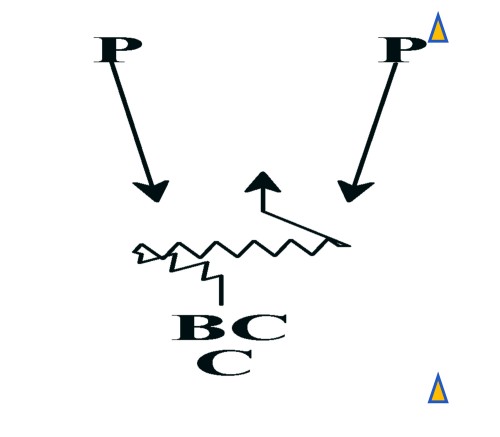Warhawk Special Team Play – Technique and Drills
by: Travis NiekampSpecial Teams Coordinator University of Louisiana-Monroe©
More from this issue
Special teams are a major determining factor in the outcome of football games at any level. It is fundamental that you stress not only the importance of special teams to your program but also continually drill them and show them the results that you want. This is our philosophy for special teams play:
• We use the KISS principle – Keep It Simple Stupid – which allows you to focus on fundamentals.
• Give the illusion that you do a lot of different formations, motions, etc.
• Take calculated risks such as fakes, onside kicks, etc. By being simple, multiple and aggressive, we have found it easier for players to ‘buy in’ to the success of special teams play.
• Set the tempo with energy.
• Win the field position battle – give the defense a long field and give your offense a short field.
• Find a way to make a positive difference – do your job and make plays.
With limited time and resources, it is difficult to be able to install, teach and drill all the things you want to have in a special teams unit. We have evolved our teaching philosophy in special teams to coaching, teaching and drilling the masses. We believe it is important to involve as many athletes as possible in special teams play.
With this approach, you are not only preparing your main contributors, but just as importantly you are developing the depth you will need throughout the season and for future seasons. We believe the best way to teach is with circuit drills. We call our special teams circuit drills, “Star Search.” It is similar to the television show by the same name that was designed to find “special talent.”
The circuit involves several fundamental skills to help be successful. Regardless of scheme, philosophy, or level, there is no question that circuit training will help your program be as efficient with your practice time as possible.
Why Circuits Work for Special Teams:
• Time is devoted to teach and coach fundamentals.
• Allows you to develop your roster.
• You can be efficient with your time by increasing the number of reps in a controlled setting.
• It helps evaluate your roster – the right ‘pieces of the puzzle’ can be put together.
• Makes for a competitive environment.
What is ‘Star Search’ or Our Special Teams Circuit Drill?
It is a 10 minute period divided into four two and a half minute segments. The ‘Kicking Pool’ should participate along with any specialized players that work only in individual segments. The drill is designed to improve and maintain the fundamentals to be successful in most aspects of special teams. Position groups will go to a specific drill then rotate clockwise at the end of each segment. Players are labeled ‘P’ and coaches ‘C.’ (Diagram 1).

Punt Block Drill
A major part of special teams is attempting the punt block. We practice the punt block on a regular basis.
Punt Block: Techniques
• Get off on the ball.
• Run through the block point.
• Keep eyes and hands low.
• Take the ball off the punter’s foot.
For our Punt Block Drill, there are two punt block lines. They will alternate turns, working ‘get off’ and taking the ball off the punter’s foot. A towel is laid on the ground which symbolizes the ‘block point.’ (Diagram 2).

Front Line Protection Drill
This is a competitive drill designed to teach both the kickoff and kickoff return units. The focus on the kickoff drill is to determine the direction of the return based on drops by the kickoff return team. Once they diagnose the return, they use their kickoff cover tools to defeat the KOR block. The focus for the kickoff return is to work on the angle of their drop based on the return. They then work to get a proper attack angle to block.
Front Line Protection: Techniques
Kickoff - Use your tool box (avoid/butt).
Two way go.
Kickoff Return - Speed to landmark (drop).
Power angle (near foot in crotch).
Nothing over the top.
For our Coverage/Block Drill, there are two lines - one for kickoff and one for kickoff return (Diagram 3).

‘Net’ Drill
This drill is also a regular part of our special teams practices. It’s a buzz word we use in describing how we would like the coverage unit fit the returner. We want to put a ‘net’ on the returner. The Net Drill is a coverage designed drill to simulate the top part of the coverage around the returner. The returner will simulate a return. The coverage unit must keep the returner inside and in front of them while at the same time gaining ground to the returner, constricting the amount of space the returner has to work. We concentrate on the last 15 yards of the coverage unit on the returner (Diagram 4).

Net: Techniques
• Focal point pursuit - near hip
• Leverage football - inside eye/outside leg back
• Come to balance - continue to gain ground
• Smell their breath - hit up!
About the Author: Travis Niekamp begins his fourth season on the UL-Monroe coaching staff this fall and his first as co-defensive coordinator. He also serves as linebackers and special teams coach. Niekamp played and then coached for UL-M Head Coach Todd Berry at both Illinois State and Army. He has 15 years of collegiate coaching experience and also coached at Washington State and Eastern Washington. A defensive tackle while at Illinois State, Niekamp received his Bachelor’s Degree in 1998.









